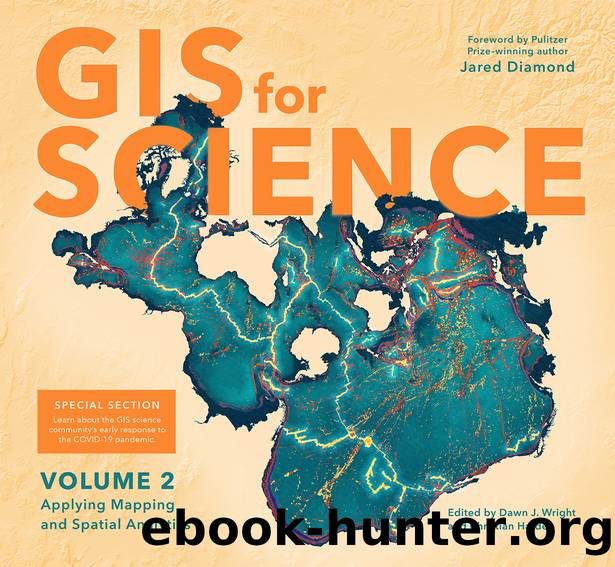Applying Mapping and Spatial Analytics: Volume 2 by Dawn J. Wright & Christian Harder

Author:Dawn J. Wright & Christian Harder [Wright, Dawn J. & Harder, Christian]
Language: eng
Format: epub
Published: 2020-12-15T00:00:00+00:00
Neighborhood mapping workflows applied to satellite imagery in Caracas, Venezuela, identify building categories to generate insights on the socioeconomic patterns of urban land use.
Getting a good fit
Given the scope of the ORNL program, which aims to map every pixel across the globe, the organization will need more than one model to meet the challenge. Ideally, the fewer the models there are, the better. Current research is testing a proof-of-concept workflow with multiple models that characterize sample imagery across the planet. The concept is based on observations that pockets of similarities tend to reappear globally that are not necessarily tied to regional geographies. The idea is to analyze the entire collection of global imagery using an algorithm that can gather similar pixels and distribute them into multiple âbucketsâ for unique models. When unseen imagery enters the workflow, the computer quickly determines which bucket to use and pushes the input through the appropriate model. The beauty of the highly automated workflow is that once the buckets are allocated, the corresponding models can be changed as needed to support not only neighborhood mapping but also other kinds of analysis.
Estimating global populationsâa people-per-pixel approach
To populate settlement and contextual layers at scale with the critical âmissing pixelsââpeopleâresearchers must overcome global disparities in data availability. While the United States conducts regular censuses and household surveys that provide population insights at the national level, many other countries do not record adequate, up-to-date, or reliable population information (if any at all) at the minimum coverage needed to estimate and distribute populations with any degree of confidence. That means outside of North America, top-down disaggregation methods of population modeling are impractical. To scale population modeling for the world, bottom-up solutions for aggregating populations in any country are essential.
Download
This site does not store any files on its server. We only index and link to content provided by other sites. Please contact the content providers to delete copyright contents if any and email us, we'll remove relevant links or contents immediately.
| Automotive | Engineering |
| Transportation |
Whiskies Galore by Ian Buxton(41488)
Introduction to Aircraft Design (Cambridge Aerospace Series) by John P. Fielding(32852)
Small Unmanned Fixed-wing Aircraft Design by Andrew J. Keane Andras Sobester James P. Scanlan & András Sóbester & James P. Scanlan(32533)
Craft Beer for the Homebrewer by Michael Agnew(17902)
Turbulence by E. J. Noyes(7659)
The Complete Stick Figure Physics Tutorials by Allen Sarah(7096)
Kaplan MCAT General Chemistry Review by Kaplan(6545)
The Thirst by Nesbo Jo(6405)
Bad Blood by John Carreyrou(6245)
Modelling of Convective Heat and Mass Transfer in Rotating Flows by Igor V. Shevchuk(6200)
Learning SQL by Alan Beaulieu(5994)
Weapons of Math Destruction by Cathy O'Neil(5778)
Man-made Catastrophes and Risk Information Concealment by Dmitry Chernov & Didier Sornette(5585)
Digital Minimalism by Cal Newport;(5319)
Life 3.0: Being Human in the Age of Artificial Intelligence by Tegmark Max(5143)
iGen by Jean M. Twenge(5125)
Secrets of Antigravity Propulsion: Tesla, UFOs, and Classified Aerospace Technology by Ph.D. Paul A. Laviolette(4858)
Design of Trajectory Optimization Approach for Space Maneuver Vehicle Skip Entry Problems by Runqi Chai & Al Savvaris & Antonios Tsourdos & Senchun Chai(4805)
Electronic Devices & Circuits by Jacob Millman & Christos C. Halkias(4698)
